A Perfect Pairing
It goes without saying that wine and cheese go well together. So it makes sense that two recently released books by Timber Press, The Guide to West Coast Cheese by Sasha Davies and Essential Wines and Wineries of the Pacific Northwest by Cole Danehower, pair perfectly in…
It goes without saying that wine and cheese go well together. So it makes sense that two recently released books by Timber Press, The Guide to West Coast Cheese by Sasha Davies and Essential Wines and Wineries of the Pacific Northwest by Cole Danehower, pair perfectly in providing us a unique and in depth understanding of this special, yet overlooked, region for wine and cheese production in the country.
I had the pleasure to review both books and interview the authors, and I was so impressed with how each is thoughtfully written and beautifully photographed. Both Davies and Danehower impressively guide the reader into a world where cheese and wine are lovingly made, most often without too much fanfare. It is the true dedication to the land and the food they produce that shines through in their writing. The books are so comprehensive and quite intuitive to use as guides. There are many features I love about each, and I was thrilled to have the opportunity to ask Davies and Danehower more about their thoughts and their experiences. I am sincerely grateful for their thoughtful responses to my questions.
I am delighted to announce that I am giving away a set of this perfect pairing! I couldn’t think of a better set of books to grace your bookshelves, whether you are a cheese lover, a wine enthusiast, or planning a trip to the West Coast. Details for the giveaway are at the end of the post.
Without further ado, let me allow the authors tell you more about their fantastic books.
———————————
Q & A with Sasha Davies
The Guide to West Coast Cheese : More than 300 Cheeses Handcrafted in California, Oregon, and Washington
I understand that you began your cheese career as an apprentice affineur at Artisanal Premium Cheese in New York City after a career in financial services. What led you on this path?
Great question. It’s not the most obvious transition but then most people I’ve met in cheese have similarly strange routes to the profession. Basically my husband and I had quit our jobs, gotten married and taken a long vacation. We agreed we were not going back to jobs that didn’t excite us and each of us came up with a short list of things we were interested in that we hoped would lead to some job ideas. My short list was: cheese, and radio documentaries. Two things I loved and didn’t know that much about. As fate would have it I found a cheese internship before anything panned out in radio.
Was cheese a large part of your upbringing? What was your favorite cheese growing up?
I have always liked cheese but most of the cheese I ate growing up was Monterey Jack and block cheddar. By default those would have been the favorites. I don’t come from a gourmet food focused family- we definitely went through the Italian phase and the late 80’s stir fry frenzy but the fridge was not teeming with specialty cheese. Interestingly enough the area where I grew up, Marin County, and its neighbor to the north (Sonoma) have become one of the epicenters for craft cheesemaking on the West Coast. It has been so great to explore such a familiar region with a new lens over the past few years.
Why West Coast? You speak of a “cheese renaissance” in California, Oregon and Washington. Can you describe any distinct differences between cheese making in New England versus the West Coast?
West Coat because it is one of the fastest growing regions in the country- there are 3 or 4 new creameries that have opened up in Oregon alone this year. I used the term renaissance on purpose because this region had such a rich history of regional creameries. Speaking with Pat Morford of River’s Edge Chevre, cheesemaker and longtime Oregon resident, I learned that there used to be creameries in every major city along the coast. The creameries sold bottled milk, butter, cultured products, and basic cheeses made with milk from surrounding dairies. There is also a handful of cheesemakers and milk processors that have been in business for over 100 years throughout the region so I don’t see cheese as being “new” to this region- rather there is a new wave of local cheesemakers bringing our attention back to dairying and all of the wonderful products that come from transformed milk.
To answer your second question, there are more similarities than differences in cheesemaking on the East and West coasts. Both regions have committed farmers and craftspeople who are working to make small scale agriculture sustainable and to create unique, high quality cheeses. It is difficult to point to major differences between these larger regions, I think the differences are more visible on a state by state level in things like agricultural policies or the resources each state allocates towards support of their dairying industry.
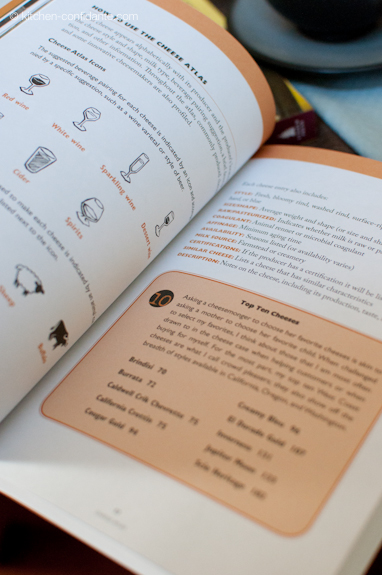
This was impossible- or nearly so. In fact it is a piece of the book that I resisted for weeks before I gave in to my editor! Thankfully she was persistent because I do think that readers want some kind of snapshot and it’s not so dissimilar from my experience selling cheese- people often start by asking you, “What’s your favorite cheese?”. I started with a list of my top ten from each state, then I looked at those lists and tried to create a collection that represented the wide variety of styles being produced.
If you could pick one cheese for the novice to try, what would it be?
I would go with a crowd pleaser: Flagship Reserve. It represents the flavor profiles of two cheeses that are beloved by the American palette- cheddar and gruyere- so it is unique and familiar at once. Flagship Reserve is also an example of a cheese that is very flavorful but one that I would not classify as strong making it a cheese that entices the novice and also satisfies cheese geeks.
For many novices, entering a cheese shop and selecting cheeses can be as intimidating as picking a good wine when you are first starting out. What approach do you recommend for a novice cheese lover to widen their palate?
First step is to find a cheesemonger that fuels your enthusiasm and works in a shop that lets you taste things. When you go to buy cheese be prepared to describe, or at least list, the kinds of cheeses you know that you like. Even if all you can tell them is, I like Brie and Cheddar that will give them a place to start selecting things that have flavors or textures in common with cheeses that you enjoy. The better they get to know your tastes the more effectively they can steer you successfully towards new cheeses.
When assembling a cheese platter, how do you like to balance your selections?
There is really no incorrect way to approach this but everyone has a bit of a method they use to assemble a great cheese plate. Most important for me is to have a variety of textures. That said I also try to have a range of flavors, at least one milder cheese- something with good flavor but not too intense- and then something with a bit more heft.
 There are so many amazing features in your book, it is like a miniature encyclopedia on cheese. I particularly appreciate how you recommend beverage pairings for each cheese. What is your favorite feature?
There are so many amazing features in your book, it is like a miniature encyclopedia on cheese. I particularly appreciate how you recommend beverage pairings for each cheese. What is your favorite feature?
I’m going to demonstrate my inability to pick favorites here by telling you two features I like! The first thing that came to mind were the illustrations of the various breeds of cows, sheep, and goats. I think the illustrator did a beautiful job on them and I like having them in there because it reminds us that without these animals and their milk we would not have cheese. My favorite part of the cheese atlas is the ‘Similar to’ listing for each cheese. This comes straight from my experiences selling cheese where most customers think about and articulate their cheese wants in relative terms, i.e. “Last week at a friend’s house I had a cheese that I think was a Gouda, do you have anything like that?”
I’m sure you had some fantastic experiences as you curated the material for your book. What was the most memorable moment of your four-month tour?
The four-month tour was actually a trip my husband and I did back in 2006 where we went all over the U.S. and there were many great experiences throughout that project which we documented at cheesebyhand.com. In terms of the time I spent working on this book which was largely completed last summer, one of the best days I can remember was in early July where I drove all over Sonoma county winding through vineyards, dropping in on cheesemakers (Vella, Laura Chenel, Bohemian Creamery, Matos Cheese, and Redwood Hill) for tasting and talking. A truly perfect summer day.
———————————
Q & A with Cole Danehower
Essential Wines and Wineries of the Pacific Northwest: A Guide to the Wine Countries of Washington, Oregon, British Columbia, and Idaho
I love how you express Great Wine through the formula Great Wine = (Place + Plant) x People. How does the Pacific Northwest distinguish themselves from other regions as a great wine producer?
It is always problematic making generalizations about a region as broad and diverse as the Pacific Northwest—and for every assertion it is easy to find an exception. However, I do believe that the prevailing ethos in Northwest winemaking really is one of craft over production, experimentation over conformity, and expression (of both place and winemaker style) over consistency.
The region’s earliest modern wine pioneers really wanted to make wine that reflected the qualities of the place where they were growing grapes, rather than wine that met some expected market need or stylistic stamp. This was especially true in Oregon—though not exclusively so—where very individualistic winegrowers sought new places to explore. The common knowledge of the time was that Oregon was too cold and wet and Washington’s winters were too harsh to grow vinifera. But the pioneers saw it differently. And still today that same spirit suffuses the region. Some of the first producers of pinot girs, gruner veltliner, vermentino, tempranillo, and many Rhone varieties were located in the Northwest.
Can you recall the first wine you tasted from the Pacific Northwest? Which wine made you fall in love with this region?
The first wine I recall having from the Pacific Northwest was a pinot gris from The Eyrie Vineyards—who were the first to plant the grape in the US. I don’t remember the vintage, but it would have been early 1990s. My brother-in-law served it to me with salmon and I loved it. But the wine that really turned me on to the Pacific Northwest, the wine that really inspired me, was a 1998 Claudia’s Choice Pinot Noir from The Broadley Vineyards, a small family producer in the southern Willamette Valley. I opened it late one night while I was watching a movie, and when I took my first taste, I jumped up rushed the glass into our bedroom where my wife had already gone to bed and I woke her up telling her she had to taste this wine!
Do you view the Pacific Northwest’s unique climate as a blessing or a hurdle when it comes to wine making?
Oh, it is absolutely a blessing! The northerly latitude exposes the grapes to more sunlight hours during the growing season, so they achieve plenty of ripening energy. Yet in the cooler regions, like the Willamette Valley, the more moderate temperatures make for development of full and balanced varietal flavors—they are not rushed into imbalance by excessive warmth. Even in the warmer regions, like eastern Washington, the very cool nights mean the grapes retain great natural acidity—there is never a need to add acid during winemaking, as can happen in warmer regions—and so the resulting fruit has wonderful balance and natural flavors. And then, there is the truly cold winters that allow the vines to achieve full natural dormancy . . . I could go on.
When I first read that your book was a guide on the wine countries of the Pacific Northwest, I have to admit that I was very surprised to see Idaho in that list of states! As you described your experience moving to Oregon from California, and viewing Oregon winemaking with initial skepticism, I had quite the same reaction when I saw Idaho as a wine producer. But it seems that they have had tremendous growth in the last decade. Would you say this is an up and coming wine producing area?
Idaho is part of the greater Pacific Northwest viticultural region in large part because its vineyard areas are located along the valleys and plateaus of the Columbia River drainage—the most important geographical commonality that links the Northwest’s wine countries. I like to think of Idaho as the Wild West of American winegrowing. There are a lot of strong-willed individualists who are exploring what is viticulturally possible in Idaho—the region is still in its youth as far as learning which grapes grow best in which places. That sounds a lot like Oregon, Washington, and BC in the early days! Certainly Idaho is up and coming. They do still have a lot to learn, but the journey is going to be exciting for everyone.
Which varietals are strong performers in Idaho?
Historically, riesling has been one of the most successful grapes in Idaho. But unfortunately a lot of Idaho riesling is made in a simplistic, unbalanced-ly sweet style, and the region has yet to really dial in the best quality riesling, in my opinion. But newer plantings of viognier are definitely producing some excellent wines, and syrah is proving to be quite successful also. It seems that everyone feels they have to grow cabernet sauvignon, and there have been some good ones from Idaho, but I don’t think growers have quite yet found the best places for Bordeaux varieties. Definitely the Rhone varieties seem to be showing the best potential.
 There was an interesting article last month by Lettie Teague in the Wall Street Journal that spotlighted the remarkable expansion of wine production in Washington State contrasted by the general decrease in demand as affected by the surplus of global wines – how do you feel about the rapid growth in this region?
There was an interesting article last month by Lettie Teague in the Wall Street Journal that spotlighted the remarkable expansion of wine production in Washington State contrasted by the general decrease in demand as affected by the surplus of global wines – how do you feel about the rapid growth in this region?
I’d make two points. First, I’m not sure I agree with the idea that there is a general decrease in demand because of an overall wine surplus. There is more sensitivity to price, certainly, but I don’t think there is sustained drop in wine demand. One of the reasons there has been rapid growth in Washington is that the geography allows for better economies of scale, and therefore plenty of reasonably priced wines. Vineyards can be rather large, vintages are quite reliable, and mechanization and other large-scale production techniques can be more readily applied than in some other areas, so the wines can be well-made at less cost.
Second, even with the tremendous growth in the number of wineries throughout the Northwest, the region is still far from being saturated. Overall it is the second largest wine producing area in North America, but it is still far behind California. Most people in North America simply don’t realize the quality and variety of wines coming from the Northwest. Within the region we think of Washington as being the behemoth and Oregon as the boutique, but the broad market reality is that most American wine drinkers barely realize the region in its entiretly makes wine . . . let alone such great wine. The headroom for growth is vast, and despite the hiccups of recessionary times, the long term future is extraordinarily bright for the Northwest.
Your book mentions Oregon as a leader in biodynamic wine. Can you tell us more about this controversial farming practice, and whether or not you think it makes a difference in the quality of a wine?
Biodynamics is a kind of uber-organic farming method that many Oregon winegrowers are experimenting with—it is still a distinct rarity elsewhere in the Northwest. The system was “invented” by the Austrian polymath Rudolph Steiner in the early part of the last century. There are a lot of myths and exaggeration about its tenants, and certainly its practices can seem bizarre. Basically biodynamics can be thought of as a manner of farming that seeks to balance crops with the natural energies of the environment—from the microbes in the soil to the affects that lunar and solar movements may have on plants and the environment. Certain processes and procedures are proscribed in order to produce this balance—more than can easily be described here.
To many, the biodynamics is hogwash disguised as New Age science, and to many others it is a rigorous discipline that brings natural alignment to agriculture. There is, of course, much more to biodynamics that this.
Does it make better wine? Hard to say. I am not aware of any scientific studies that have been conducted, or even any rigorous tasting comparisons. For me, I like what winegrower and winemaker Michael Etzel of Oregon’s Beaux Freres winery told me. He doesn’t know if biodynamics produces better wine or not, but he does know that following biodyanmic procedures makes him a better, more attentive farmer. I figure that can’t be a bad thing!
When many people think of Oregon wine, many people immediately think of a Pinot Noir. What other wines should wine enthusiasts consider from Oregon?
Well-made Oregon riesling is absolutely fantastic! The state’s chardonnay wines are being made in many different styles, but almost always with an emphasis on fruit purity, and they are overlooked gems. White wines in general are underrated from Oregon. The state is the New World home of pinot gris, gruner veltliner, and vermentino, and the brilliance of our best white wines (including pinot blanc) is a bit of a market secret. I’d also direct people to try tempranillo from southern Oregon, and to experiment with the state’s cabernet franc wines.
You mention British Columbia as perhaps the most under-appreciated wine country in North America. It sounds as though they are also enjoying a period of growth – what are some of the most exciting wines you have encountered from BC that you would like people to know about?
From an American perspective, the problem with BC wines is that you can’t get them here. There are many reasons for this, but the main point is that to discover BC’s wines you simply have to go there . . . which is not hard to do. From Portland, Oregon, for instance, it is a shorter distance to drive to Vancouver BC than it is to Ashland, OR!
So once you make your way, let’s say, to Vancouver BC, you’ll find yourself in a dazzling international capitol where great BC wines are on offer at nearly every fine dining restaurant (of which there is a glorious profusion), and at wine shops galore. For the best BC wines, I’d look for the premium labels of Mission Hill (certainly one of the most beautiful wineries in North America), Sandhill, CedarCreek, Tinhorn Creek, Quails’ Gate, Sumac Ridge, and Road 13.
For more boutique and harder-to-find wines, I’d highly recommend Blue Mountain Vineyard (pinot noir and sparkling), Tantalus (pinot noir and riesling), Venturi-Schulze (pinot noir and sparkling), Herder Winery (Bordeaux-style red blends), Poplar Grove (chardonnay), La Frenz Winery (merlot and semillon), Black Hills Estate (Bordeaux-style red blend). There are so many others, I don’t know where to stop . . . email me if you go.
Looking at the map of wine regions in the Pacific Northwest, I am so impressed by the range in topography, and can only imagine how beautiful some of these areas are. Which are some of your best-loved regions?
For sheer natural beauty, BC’s Okanagan Valley is pretty special. For peaceful and bucolic rural wine country, the Willamette Valley is your choice. For dramatic desert vistas of vines, Washington’s Red Mountain is the place to go. For gorgeous vineyards tucked into mountain valleys, Southern Oregon is perfect. For sweeping views of mountains, rivers, and grapevines, the Columbia Gorge is unbeatable. You pick which area sounds best to you!
———————————
Giveaway Details:
Kitchen Confidante will be giving away one copy each of The Guide to West Coast Cheese, by Sasha Davies and Essential Wines and Wineries of the Pacific Northwest, by Cole Danehower, courtesy of Timber Press. To be eligible, you must live in the United States (deepest apologies to my friends outside of the U.S.!). One (1) winner will be selected at random and announced on Thursday, October 14, 2010.
How to Enter:
There are up to three ways to enter for a chance to win this set of books. Do one, or do all, the more ways you enter, the better your chances to win! All entries must be received by 11:59 PM, Pacific Time, Tuesday, October 12, 2010.
- Leave a comment on this post and let me know: What is the first thing that comes to mind when you think of the Pacific Northwest?
- Follow Kitchen Confidante on Twitter, and re-tweet this contest! Be sure to mention @kitchconfidante in your RT, so I see it!
- Follow Kitchen Confidante on Facebook, and respond to the question: Have you ever visited the Pacific Northwest?
I can’t wait to see your responses and to announce the winner! These are a beautiful set of books, and amazing resources, I know you will enjoy them. Good luck!
Comments
Comments are closed.
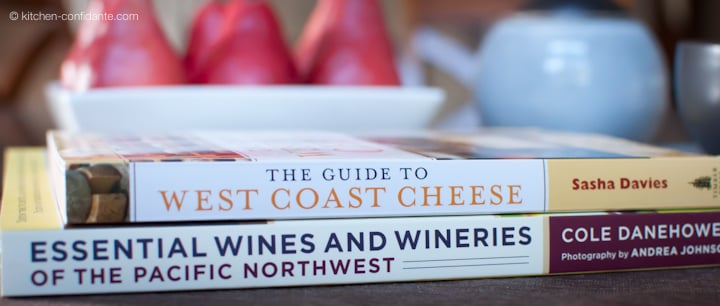
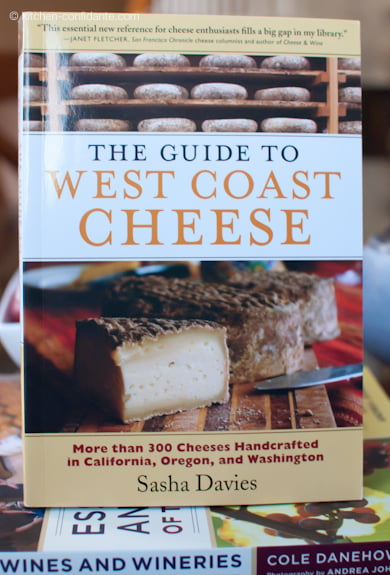
 There are so many amazing features in your book, it is like a miniature encyclopedia on cheese. I particularly appreciate how you recommend beverage pairings for each cheese. What is your favorite feature?
There are so many amazing features in your book, it is like a miniature encyclopedia on cheese. I particularly appreciate how you recommend beverage pairings for each cheese. What is your favorite feature?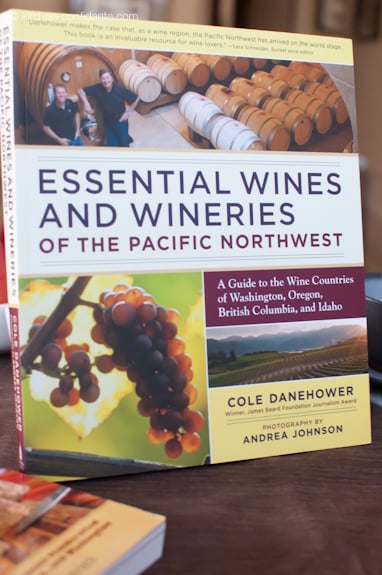
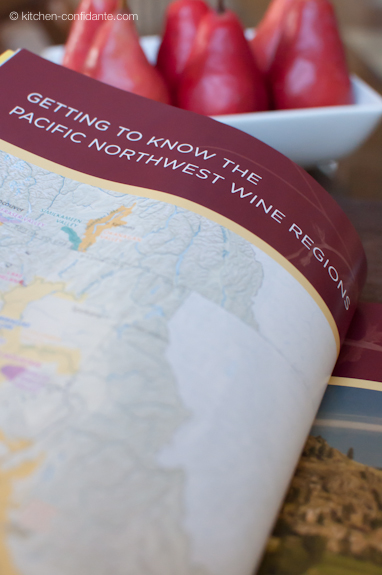 There was an interesting article last month by Lettie Teague in the Wall Street Journal that spotlighted the remarkable expansion of wine production in Washington State contrasted by the general decrease in demand as affected by the surplus of global wines – how do you feel about the rapid growth in this region?
There was an interesting article last month by Lettie Teague in the Wall Street Journal that spotlighted the remarkable expansion of wine production in Washington State contrasted by the general decrease in demand as affected by the surplus of global wines – how do you feel about the rapid growth in this region?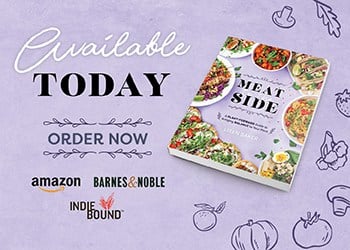
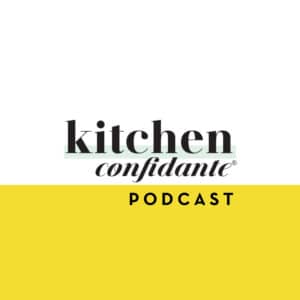
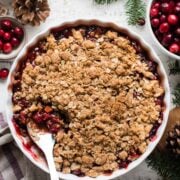
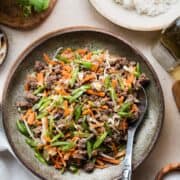
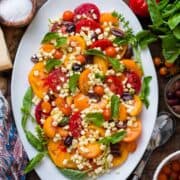
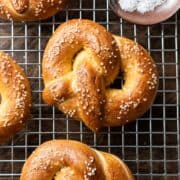

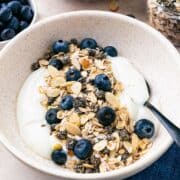

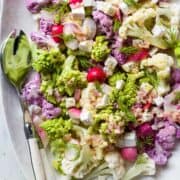

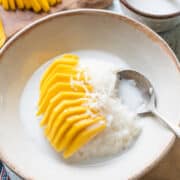


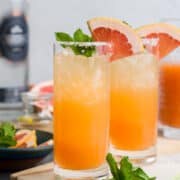
Thanks everyone! I really enjoyed your thoughts & memories of the Pacific Northwest. Good luck and I look forward to announcing the winner!
Salmon and pinot!! :)
To be honest, the first thing that comes to mind is beer… but I can think of a number of wonderful things to say about the Pacific Northwest! :-)
I follow Kitchen Confidante on Facebook. I haven’t visited the Pacific Northwest.
Thank you for posting such an interesting post. I love learning about more about the west coast, especially when it relates to food and wine. When I think of the Pacific Northwest I think of rugged, lush, and green landscapes. Good luck, Liren!
When I think of the Pacific Northwest, I think of wine, coffee and bookstores…I’m wishing I could be there now! I loved reading these interviews…there is an artisan cheese house by my house and over the past few months, Ryan and I have been learning so much about the cheese process. Thank you for sharing these authors with us and for hosting this giveaway!
The first thing that comes to mind when I think of the Pacific Northwest is green mountains with their heads in the clouds.
When I think of the Pacific Northwest, food comes to mind. Fresh seafood, produce, beer and wine! Yum!!!! Going to have to check out these books (or hopefully win them!)
I’ve only been once to the Pac NW and the thing that stuck most in my mind was the amazing landscape — so lush with that fresh, sea air. My camera could hardly do it justice. Of course the local food and amazing wineries weren’t second-rate either.
Cheers and very thorough reviews (lucky you!),
*Heather*
My goodness, Liren. You blow me away with your well-researched and eloquently-worded interview. When I think of Pacific Northwest, I have always imagined the bounty of Pike’s Market, but more recently I have become enamored with the beauty of the Willamette Valley for it’s lush vineyards (my friend just posted her pictures on FB). I think my camera would agree that Oregon would be an ideal place to capture more if nature’s best. Having said this, I’m now even more determined to run my next half marathon next year in the Pacific NW. Thanks for such a lovely post.
Thanks for such an informative post! The first thing that comes to mind when I think of the pacific Northwest is wild salmon and diverse Asian cuisine. I’d love to go back there and visit.
Wonderful post! Two of my favorite things – cheese and wine! I have visited the northwest and Pikes Market comes to mind first, then the glorious scenery along with the rich gourmet presence that is infused throughout the region along with wonderful wines. Have a great weekend!!! :-)